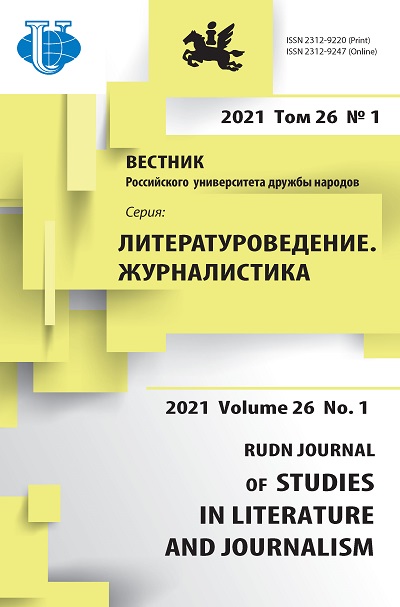The Calcutta Chromosome: An Acknowledgement of Indigenous Caliber and Extrapolation upon the History of Malaria Parasite Discovery
- Authors: Pathak M.K.1
-
Affiliations:
- Arka Jain University
- Issue: Vol 26, No 1 (2021)
- Pages: 79-84
- Section: LITERARY CRITICISM
- URL: https://journals.rudn.ru/literary-criticism/article/view/26079
- DOI: https://doi.org/10.22363/2312-9220-2021-26-1-79-84
Cite item
Full Text
Abstract
Amitav Ghosh’ novel The Calcutta Chromosome: a Novel of Fevers, Delirium and Discovery is considered, - an outstanding literary work in which the writer reveals a discourse of science versus counter-science from the earlier world of social, cultural and ethnical history of Indian subcontinent. India is home to the oldest continuous civilization, nevertheless, the long invasive rule of the Mughals and the Britishers has framed minds to undervalue the indigenous knowledge, practices, customs and discourses. Amitav Ghosh’ novel denies the Western supremacy in every field and puts a question mark in the invention of Anopheles maculipennis as the cause of malaria. Dr. Ronald Ross received the prestigious Nobel Prize in 1902 for his discovery of malaria parasite but Ami- tav Ghosh supports the contribution of Indian assistants Mangala and Laakhan who were not acknowledged by the British researchers. The novel reflects a postcolonial approach to interpret Western scientific mechanism, posits the question to unethical exploitation of native workers by the English and gives voice to the traditional knowledge of the subalterns. An integral part of Ghosh’s approach in this novel is to illuminate the richness of ideas and complexity of Indigenous life, and to create a place where aboriginals are acknowledged for their remarkable contributions.
Keywords
About the authors
Manoj Kumar Pathak
Arka Jain University
Author for correspondence.
Email: mkp4ujsr@gmail.com
Assistant Professor of the Department of English
312/A Gamharia District, Jamshedpur, 832108, Republic of IndiaReferences
- Naik, M.K., & Narayan S.A. (2009). Indian English fiction 1980-2008: New bearings and fresh flowering. Indian English Fiction: A Critical Study. New Delhi, Pencraft International.
- Trilling, L. (2008). The liberal imagination. New York, New York Review Books Classics.
- Iyenger, K.R.S. (1985). The novel themes, backgrounds, types. In Indian Writing in English (chapter XVI). New Delhi, Sterling Publishers.
- Macaulay, T.B. (1835, February 2). Minute by the Hon'ble T.B. Macaulay. Retrieved February 1, 2018, from http://www.columbia.edu/itc/mealac/pritchett/00generallinks/ macaulay/txt_minute_education_1835.html
- Banerji, J. (1996, June - July). ‘Bengali Braid’ (review of The Calcutta Chromosome). Indian Review of Books, 5(9), 22-30.
- Bradbury, M. (1973). Possibilities: Essays on the state of the novel. London, Oxford Press University.
- Mondal, A.A. (2007). Amitav Ghosh. Manchester, Manchester University Press. https://doi. org/10.7228/manchester/9780719070044.001.0001
- Ghosh, A. (1995). The Calcutta chromosome. USA, Avon Books.
















